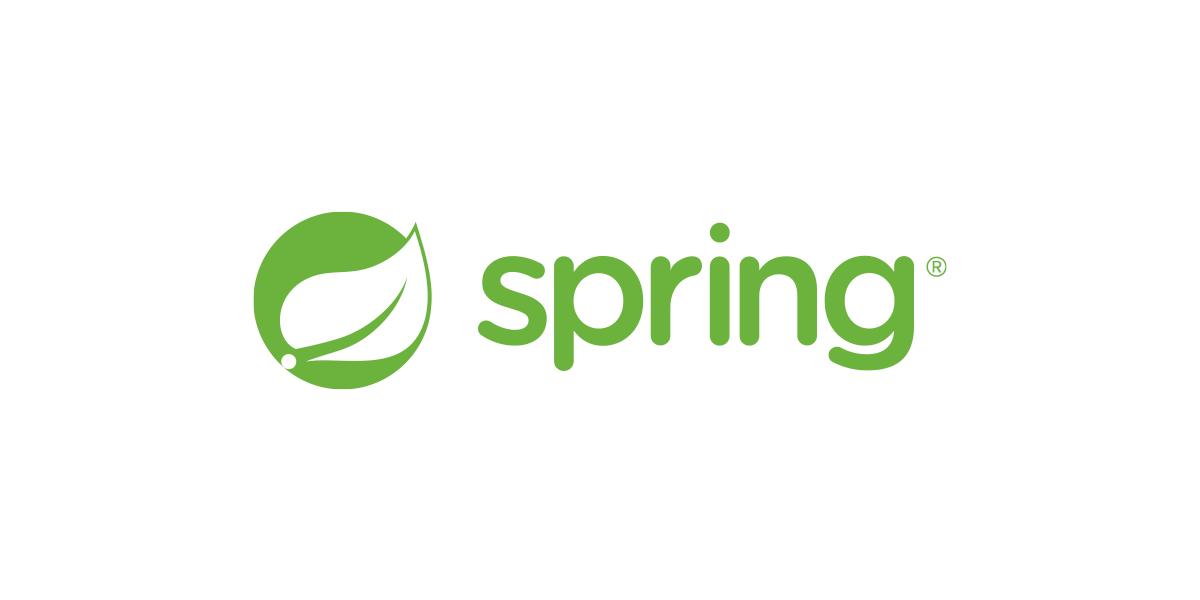
SpringBoot基本配置
一、配置启动日志Banner
在启动SpringBoot应用的时候我们可以在日志输出中看到Spring的输出:
. ____ _ __ _ _
/\\ / ___'_ __ _ _(_)_ __ __ _ \ \ \ \
( ( )\___ | '_ | '_| | '_ \/ _` | \ \ \ \
\\/ ___)| |_)| | | | | || (_| | ) ) ) )
' |____| .__|_| |_|_| |_\__, | / / / /
=========|_|==============|___/=/_/_/_/
:: Spring Boot :: (v2.3.3.RELEASE)
其实SpringBoot的自动配置功能是我们可以很轻松的就可以使用自己想用的Banner,例如在江湖广为流传的Banner:
佛祖保佑 永无BUG
其实想要配置是很简单的,在resources文件夹下创建一个banner.txt的文件,启动之后即可。如下,运行后控制台中就会出现一个绿色的佛祖了。这里贴一个在百度上找到的一个制作网站ASCII Generator (network-science.de)
banner.txt
${AnsiColor.GREEN} 设置字体颜色
_ooOoo_
o8888888o
88\" . \"88
(| -_- |)
O\\ = /O
____/`---'\\____
.' \\| |// `.
/ \\\\||| : |||// \\
/ _||||| -:- |||||- \\
| | \\\\\\ - /// | |
| \\_| ''\\---/'' | |
\\ .-\\__ `-` ___/-. /
___`. .' /--.--\\ `. . __
.\"\" '< `.___\\_<|>_/___.' >'\"\".
| | : `- \\`.;`\\ _ /`;.`/ - ` : | |
\\ \\ `-. \\_ __\\ /__ _/ .-` / /
======`-.____`-.___\\_____/___.-`____.-'======
`=---='
^^^^^^^^^^^^^^^^^^^^^^^^^^^^^^^^^^^^^^^^^^^^^
佛祖保佑 永无BUG
${spring-boot.formatted-version} springboot版本
在SpringBoot的配置文件(application.yml/application.properties)中可以配置Banner相关的信息,可见当我们不想把Banner文件的名字叫做banner.txt是,可以通过spring.banner.location=classpath:xxx.txt来指定,但是既然都约定好了,我们就按照这个约定来配置就好。还可以看到其实还可以使用图片Banner。

这里使用一个网络的动图:01e8fa5965991ba8012193a3195e5a.gif (800×800) (zcool.cn)
然后改名为banner.gif,运行SpringBoot应用,这时候打印出来的Banner会特别多,因为gif有很多帧组成,每一帧都会被打印出来。其实使用图片Banner并不美观。如下用字符打印的小人行走的图中的一帧。
::::::::::::::::::::::::::::::::::::::::::::::::::::::::::::::::::::::::::::
::::::::::::::::::::::::::::::::::::::::::::::::::::::::::::::::::::::::::::
::::::::::::::::::::::::::::::::::::::::::::::::::::::::::::::::::::::::::::
::::::::::::::::oooooooooooooooooooooooooooooooooooooooooooo::::::::::::::::
::::::::::::::::::::::::::::::::::::::::::::::::::::::::::::::::::::::::::::
::::::::::::::::: :::::::::::::::::
::::::::::::::::: :::::::::::::::::
::::::::::::::::: :::::::::::::::::
::::::::::::::::: :::::::::::::::::
::::::::::::::::: :::::::::::::::::
::::::::::::::::: :::::::::::::::::
::::::::::::::::: #: ##: :::::::::::::::::
::::::::::::::::: *###. :::::::::::::::::
::::::::::::::::: #o :::::::::::::::::
::::::::::::::::: :::::::::::::::::
:::::::::::::::::&&&&&&&&&&&&&&&&&&&&&&&&&&&&&&&&&&&&&&&&&&:::::::::::::::::
:::::::::::::::::&&&&&&&&&&&&&&&&&&&&&&&&&&&&&&&&&&&&&&&&&&:::::::::::::::::
:::::::::::::::::&&&&&&&&&&&&. &&&&&&&&&&&&&:::::::::::::::::
:::::::::::::::::&&&&&&&&&&. &&&&&&&&&&&:::::::::::::::::
:::::::::::::::::&&&&&&&&&&&: .&&&&&&&&&&&&:::::::::::::::::
:::::::::::::::::&&&&&&&&&&&&&&& &&&&&&&&&&&&&&&&&&:::::::::::::::::
:::::::::::::::::&&&&&&&&&&&&&* .&&&&&&&&&&&&&&&&&&&:::::::::::::::::
:::::::::::::::::&&&&&&&&&&&& :&&&&&&&&&&&&&&&&&&&&:::::::::::::::::
:::::::::::::::::&&&&&&&&&&& .&&&&&&&&&&&&&&&&&&&&&:::::::::::::::::
:::::::::::::::::&&&&&&&&&& &&&&&&&&&&&&&&&&&&&&&&:::::::::::::::::
:::::::::::::::::&&&&&&&&&o &&&&&&&&&&&&&&&&&&&&&&&:::::::::::::::::
::::::::::::::::*&&&&&&&&&: &&&&&&&&&&&&&&&&&&&&&&&:::::::::::::::::
::::::::::::::::.********** **********************:::::::::::::::::
:::::::::::::::::***********. *********************:::::::::::::::::
:::::::::::::::::************** .*****************:::::::::::::::::
:::::::::::::::::***************** ************:::::::::::::::::
:::::::::::::::::********************** ******:::::::::::::::::
::::::::::::::::::::: ::....*::::::::... ...::::::::::::::::::::::
::::::::::::::::::::: :::::::::::::::*........*:::::::::::::::::::::
::::::::::::::::::::: ::::::::::::::::.........:::::::::::::::::::::
::::::::::::::::::::: :::::::::::::::::.........::::::::::::::::::::
::::::::::::::::::::. *:::::::::::::::::*........*:::::::::::::::::::
:::::::::::::::::::: :::::::::::::::::::.........:::::::::::::::::::
:::::::::::::::::::* .::::::::::::::::::::.........::::::::::::::::::
::::::::::::::::::: :::::::::::::::::::::*........*:::::::::::::::::
::::::::::::::::::. *::::::::::::::::::::::.........:::::::::::::::::
:::::::::::::::::* .::::::::::::::::::::::::.........::::::::::::::::
::::::::::::::::: :::::::::::::::::::::::::.........::::::::::::::::
:::::::::::::::* ::::::::::::::::::::::::::..........:::::::::::::::
:::::::::::::: ::::::::::::::::::::::::::::.........*::::::::::::::
::::::::::::: .:::::::::::::::::::::::::::::..........::::::::::::::
:::::::::::. ::::::::::::::::::::::::::::::::.........::::::::::::::
:::::::::::::::::::::::::::::::::::::::::::::::::::::.........*:::::::::::::
::::::o&&&&&&&&&&&&&&&&&&&&&&&&&&&&&&&&&&&&&&&&&&&&&&&&&&&&&&&&&&&&&&&::::::
:::::::&&&&&&&&&&&&&&&&&&&&&&&&&&&&&&&&&&&&&&&&&&&&&&&&&&&&&&&&&&&&&&&::::::
SpringBoot中定义Banner打印的类SpringApplicationBannerPrinter,支持"gif", "jpg", "png"这三种图片,从getBanner方法中可以看到,如果配置了图片banner会先打印图片Banner,如果同时也配置了文字banner,会在图片banner打印完之后打印文字banner。
class SpringApplicationBannerPrinter {
static final String BANNER_LOCATION_PROPERTY = "spring.banner.location";
static final String BANNER_IMAGE_LOCATION_PROPERTY = "spring.banner.image.location";
static final String DEFAULT_BANNER_LOCATION = "banner.txt";
static final String[] IMAGE_EXTENSION = new String[]{"gif", "jpg", "png"};
...
private Banner getBanner(Environment environment) {
SpringApplicationBannerPrinter.Banners banners = new SpringApplicationBannerPrinter.Banners();
banners.addIfNotNull(this.getImageBanner(environment));
banners.addIfNotNull(this.getTextBanner(environment));
if (banners.hasAtLeastOneBanner()) {
return banners;
} else {
return this.fallbackBanner != null ? this.fallbackBanner : DEFAULT_BANNER;
}
}
...
}
如果想要关闭banner的打印,只需要在SpringBoot配置文件中配置即可。
spring:
main:
banner-mode: off # console log off 三种配置选项
二、Web容器配置
2.1 替换默认的Web容器和简单的配置
SpringBoot中内嵌了Tomcat,所以我们是可以轻松的把SpringBoot应用打成Jar包,独立运行。同时我们也可以不适用Tomcat,使用updertow或者jetty。如下使用jetty。
<dependency>
<groupId>org.springframework.boot</groupId>
<artifactId>spring-boot-starter-web</artifactId>
<exclusions>
<exclusion>
<groupId>org.springframework.boot</groupId>
<artifactId>spring-boot-starter-tomcat</artifactId>
</exclusion>
</exclusions>
</dependency>
<!-- 使用undertow -->
<dependency>
<groupId>org.springframework.boot</groupId>
<artifactId>spring-boot-starter-jetty</artifactId>
</dependency>
<!-- 使用undertow -->
<!-- <dependency>-->
<!-- <groupId>org.springframework.boot</groupId>-->
<!-- <artifactId>spring-boot-starter-undertow</artifactId>-->
<!-- </dependency>-->
关于http端口配置,server.port可以配置http端口,同时也有一些特殊值,例如0,-1。配置了0代表,每次启动都是随机端口,而-1则是表示不对外暴露端口,即禁止访问该web应用。
server.port=8080
启动日志:
INFO 888 --- [main] o.s.b.web.embedded.jetty.JettyWebServer : Jetty started on port(s) 8000 (http/1.1) with context path '/'
server.port=0
启动日志:
INFO 9960 --- [main] o.s.b.web.embedded.jetty.JettyWebServer : Jetty started on port(s) 5939 (http/1.1) with context path '/'
server.port=-1
此时日志并没有显示端口,无法访问web应用
如果端口时固定时我们时可以通过,属性注入拿到启动端口,当我们配置了随机端口,则需要其他的手段拿到。
@SpringBootApplication
public class BasicConfigApplication implements ApplicationListener<WebServerInitializedEvent> {
private Logger log = LoggerFactory.getLogger(BasicConfigApplication.class);
public static void main(String[] args) {
SpringApplication.run(BasicConfigApplication.class, args);
}
@Override
public void onApplicationEvent(WebServerInitializedEvent event) {
log.info("随机启动端口:{}", event.getWebServer().getPort());
}
}
开启响应压缩
默认是关闭的,通过server.compression.enabled=true开启,默认当响应大于2KB时,就会压缩传输,可以自主配置此值。默认支持以下这些相应类型进行压缩,当需要其他的类型,也可自主配置。
"text/html", "text/xml", "text/plain", "text/css", "text/javascript", "application/javascript", "application/json", "application/xml"

三、Tomcat日志配置
Tomcat日志分为两种日志:
- access log:访问日志,记录外部请求
- server log:服务器内部日志,记录服务内部运行的日志
server:
port: 8000
compression:
enabled: true
tomcat:
accesslog:
# 开始访问日志
enabled: true
# 访问日志文件名称的时间格式化
file-date-format: yyyyMMdd
# 访问日志名称的前缀
prefix: tomcat_access_log_
# 访问日志名称的后缀
suffix: .log
# 访问日志的输出内容
# %h 访问的客户端IP
# %l 用户的身份
# %u 用户名
# %t 请求时间
# %r 请求地址
# %s 响应的状态码
# %b 响应的大小
pattern: %h %l %u %t \"%r\" %s %b
# 访问日志的存放的路径
basedir: access-log
logging:
level:
# com.msr.better 包下的日志级别设置为debug
com.msr.better: debug
# org.springframework 包下的日志级别设置为warn
org.springframework: warn
配置:

四、Tomcat Https证书配置
1、生成证书
keytool -genkey -alias boot_https -keyalg RSA -keysize 2048 -keystore boot_https.p12 -validity 365
2、把生成的证书放到resources下
3、在SpringBoot配置文件中配置
server:
ssl:
key-alias: boot_https
key-store: classpath:boot_https.p12
# 生成证书时输入的password
key-store-password: 123456
启动SpringBoot应用之后,在日志中可以看到已经使用https了
INFO 7504 --- [main] o.s.b.w.embedded.tomcat.TomcatWebServer : Tomcat initialized with port(s): 8000 (https)
因为已经启用了Https,当使用Http请求应用时,会报错。这对于用户来说体验并不是很好,因此我们可以可以配置一下,将http装成
Bad Request
This combination of host and port requires TLS.
Tomcat配置http转发到https
@Configuration
public class WebConfig {
@Bean
public TomcatServletWebServerFactory webServerFactory() {
TomcatServletWebServerFactory webServerFactory = new TomcatServletWebServerFactory() {
@Override
protected void postProcessContext(Context context) {
SecurityConstraint securityConstraint = new SecurityConstraint();
securityConstraint.setUserConstraint("CONFIDENTIAL");
SecurityCollection securityCollection = new SecurityCollection();
securityCollection.addPattern("/*");
securityConstraint.addCollection(securityCollection);
context.addConstraint(securityConstraint);
}
};
webServerFactory.addAdditionalTomcatConnectors(myConnectors());
return webServerFactory;
}
private Connector myConnectors() {
Connector connector = new Connector("org.apache.coyote.http11.Http11NioProtocol");
connector.setScheme("http");
connector.setPort(8080);
connector.setSecure(false);
connector.setRedirectPort(8000);
return connector;
}
}
再次启动应用就会打印出一个日志,8080端口时http协议,8000端口时https协议,上面的代码配置中,访问8080端口的会被重定向转发到8000端口。
INFO 3980 --- [main] o.s.b.w.embedded.tomcat.TomcatWebServer : Tomcat started on port(s): 8000 (https) 8080 (http) with context path ''
五、读取应用配置
读取应用的配置文件application.yml或application.properties,Spring Boot提供了三种方式,通用的Environment类,可以通过key-value方式获取到配置文件中的值。也可以通过@value注解,自动注入属性,还可以将一组属性自动注入到一个配置类。
1、Environment类
@Component
public class EnvComponent {
@Autowired
private Environment environment;
public int getPort() {
Integer port = environment.getProperty("server.port", Integer.class);
System.out.println(port);
return port;
}
}
Environment时SpringBoot中最早初始化的一个类,因此可以在Spring Boot应用中任何地方使用。
2、@value自动注入属性
@GetMapping("/port")
public int getPort(@Value("${server.port}")Integer port) {
return port;
}
@value并不能在任何Spring管理的Bean中使用,因为@value本身是通过org.springframework.beans.factory.annotation.AutowiredAnnotationBeanPostProcessor实现的,他是BeanPostProcessor接口的实现类,因此任何BeanPostProcessor和BeanFactoryPostProcessor的子类中都不能使用@value来注入属性,因为那时候@value还没有被处理。
3、@ConfigurationProperties注解
通常情况下,将一组同样类型的配置属性映射为一个类更加方便,比如服务器配置:
yaml:
server:
port: 9090
context-path: /api
properties:
server.port=9090
server.context-path=/api
不过在使用@ConfigurationProperties注解时,需要加入依赖
<dependency>
<groupId>org.springframework.boot</groupId>
<artifactId>spring-boot-configuration-processor</artifactId>
<optional>true</optional>
</dependency>
在配置类中配置好,就可以获取直接用了。在处理ConfigurationProperties注解的类的时候,会自动将"-"或"_"去掉,换成Java命名规范,例如将context-path转成contextPath。
@Configuration
@ConfigurationProperties("server")
public class ServerConfig {
private Integer port;
private String contextPath;
public Integer getPort() {
return port;
}
public void setPort(Integer port) {
this.port = port;
}
public String getContextPath() {
return contextPath;
}
public void setContextPath(String contextPath) {
this.contextPath = contextPath;
}
}
ConfiguationProperties和value的功能差不多,在配置类中使用的属性都是同一组管理的,可以使用ConfiguationProperties注解更为方便。@value的优点时支持SpEL表达式,但事实SqEL表达式不易于调试和重构。
六、自动装配
6.1 @Configutation注解和@Bean注解
Spring的Java配置的核心就是可以使用@Configuration作用在类上,并在联合在该类里面一个或多个的@Bean注解修饰的方法,声明Spring管理的Bean。@Configuration修饰的类相当于以前的一个XML配置文件,@Bean注解对应XML里面的bean标签。
@Configuration
public class MyConfig {
@Bean
public Student student(){
Student student = new Student();
student.setName = "tom";
student.setAge = 20;
return student;
}
}
上面代码中的MyConfig类使用了@Configuration注解修饰,向Spring表明该类是个配饰类,类里面带有@Bean注解的方法都会被Spring调用,但会对象作为一个Spring容器管理的Bean。@Bean还可以通过它的name属性设置Bean的名称,默认时方法名。配置类可以获取外部属性和注入其他的Bean。
6.2 Bean条件装配
在Spring Boot中还可以通过指定当前Spring容器中是否含有另外一个Bean来决定该Bean是否配置。使用@ConditionalOnBean,在当前上下文中是否存在某个对象时,才会实例化一个Bean。使用@ConditonalOnMissingBean,在当前上下文中不存在某个对象时,才会去实例化一个Bean。
@ConditionalOnBean的使用场景是一个Bean依赖与另外一个Bean,所以另外一个Bean必须得存在,才能实例化。例如,一个数据库数据连接池需要数据源的Bean已经装载了,才去创建数据库连接池的配置。
@Configuration
@ConditionalOnBean(DataSource.class)
public class DataSourcePoolConfig{
}
@ConditonalOnMissBean的使用场景,我需要一个Ban,如果不存在,那就去初始化出来。例如:当前上下文环境不存在数据源Bean,那就调用druidDataSource方法初始化一个出来。
@Configuration
public class DataSourceConfig{
@Bean
@ConditonalOnMissingBean(DataSource.class)
public DataSource druidDataSource(){
...
}
}
6.3 Class条件装配
Class条件装配是按照某个类是否在Classpath中来决定是否配置Bean。@ConditionalOnClass当给定的类名在类路径上存在,则实例化当前Bean。@ConditionalOnMissingClass 当给定的类名在类路径上不存在,则实例化当前Bean。例如以下是SpringBoot中数据源的自动配置的类。数据源自动注入的条件之一就是当前类路径下存在DataSource.class类。
@Configuration(proxyBeanMethods = false)
@ConditionalOnClass({ DataSource.class, EmbeddedDatabaseType.class })
...
public class DataSourceAutoConfiguration {
...
}
6.4 Environment装配
可以根据SpringBoot的Environment属性来决定配置是否生效。例如在Spring Boot配置文件中配置datasource.multiple.enable来决定是否开启动态数据源,如果没有指定havingValue,只要属性不为false,配置都生效。
matchIfMissing表示配置文件中没有配置datasource.multiple.enable,配置也能生效,matchIfMissing默认值是false。
@ConditionalOnProperty(name = "datasource.dynamic.enable",havingValue = "true",matchIfMissing = true)
public class DynamicDataSourceConfig{
...
}
6.5 其他条件装配
@ConditionalOnExpression,当表达式为true时,才会实例化一个Bean,支持SqEL表达式,比如根据配置文件中的某个值来决定配置是否生效。
@ConditionalOnJava,当存在指定的Java版本的时候。
@ConditionalOnJava(range = ConditionalOnJava.Range.EQUAL_OR_NEWER,value = JavaVersion.EIGHT)
6.6 联合多个条件装配
前面所说的各种条件装配是可以联合使用的。例如org.springframework.boot.autoconfigure.cache包下的Redis缓存的配置就是多个条件装配。
@Configuration(proxyBeanMethods = false)
@ConditionalOnClass(RedisConnectionFactory.class)
@AutoConfigureAfter(RedisAutoConfiguration.class)
@ConditionalOnBean(RedisConnectionFactory.class)
@ConditionalOnMissingBean(CacheManager.class)
@Conditional(CacheCondition.class)
class RedisCacheConfiguration {
...
}
6.7 Condition接口
当SpringBoot内置的ConditionalOnBean、ConditionalOnMissingBean等无法满足需求时,可以自建构建一个Condition实现,使用@COnditional注解来引用自己的实现。Spring中关于Condition接口的:
@FunctionalInterface
public interface Condition {
boolean matches(ConditionContext var1, AnnotatedTypeMetadata var2);
}
ConditionContext类可以得到用于帮助条件判断的辅助类,例如Environment,读取系统属性、环境变量、配置参数等作为条件判断;ResourceLoader,一个Spring类,用于加载和判断资源文件,比如某个配置文件存在时配置才生效;ConfigurationListableBeanFactory,Spring容器。
一下配置了一个对消息进行加密的类,存在message.txt资源文件并且message.encrypt.enable生效。
@Configuration
public class EncryptConfig {
@Bean
@Conditional(MessageEncryptCondition.class)
public MessageEncryptBean messageEncryptBean() {
return new MessageEncryptBean();
}
static class MessageEncryptCondition implements Condition {
@Override
public boolean matches(ConditionContext conditionContext, AnnotatedTypeMetadata annotatedTypeMetadata) {
Resource resource = conditionContext.getResourceLoader().getResource("message.txt");
Environment environment = conditionContext.getEnvironment();
return resource.exists() && environment.containsProperty("message.encrypt.enable");
}
}
}





